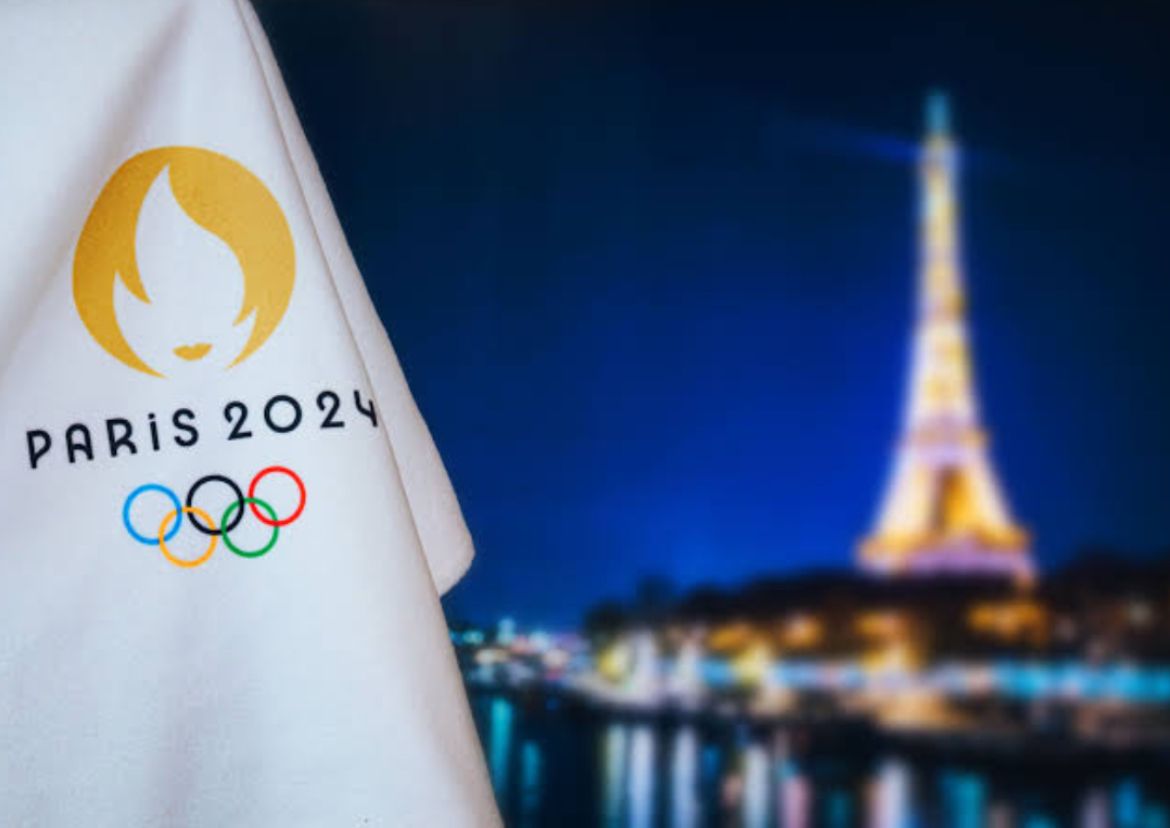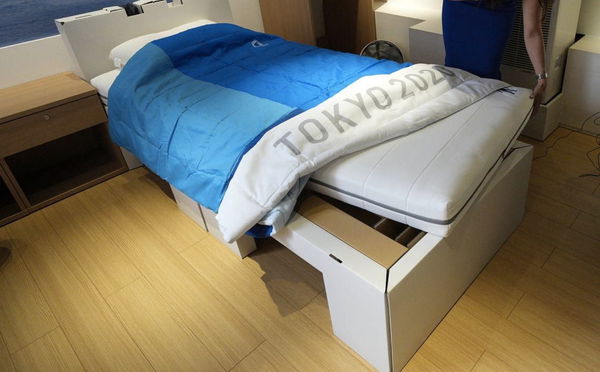

Ever wondered what it’s like to be present at an Olympics? “It is like Vegas,” two-time Olympic medallist John Godina told ESPN back in 2012. The Olympics and s*x go hand in hand. As Godina explained, athletes from around the world converge in one space for an electrifying and adrenaline-fueled event, perhaps driven by the knowledge that they may never see each other again. While social distancing set the tone for the Tokyo Olympics, the City of Love has declared the Paris Olympics “Games Wide Open.”
Watch What’s Trending Now!
This motto aims to make the games “more sustainable, more united and more inclusive” than ever before and, of course, to spark more intimate encounters than ever before. However, despite 300,000 condoms set to be handed out at the Olympic and Paralympic Village, in an ironic twist, “anti-s*x” beds are also installed in athletes’ rooms, causing a stir worldwide. However, as we ponder this decision, the purpose of the alleged ‘Anti-S*x’ beds has nothing to do with Olympians’ intimacy at all.
ADVERTISEMENT
The true purpose of the “Anti-S*x” beds at the Paris Olympics
According to the New York Post, the “anti-s*x” beds introduced for the 2024 Paris Olympics have attracted worldwide attention, much like many other features of the Olympics. These beds are smaller than usual and made of cardboard, making it uncomfortable for more than one person to use them at the same time.

ADVERTISEMENT
It’s important to note that these same beds were used at the 2021 Tokyo Olympics and are manufactured by the same company, Airweave. At the Tokyo 2021 Olympics, these cardboard beds with polyethylene mattresses made history as the first of their kind ever used at an Olympic event.
ADVERTISEMENT
After the event, the beds were completely recycled, with almost all the materials used being renewable. The organizers of the 2024 Olympic Games in Paris have installed these same beds in the City of Love’s Olympic and Paralympic Village. Despite being labeled “anti-s*x,” the beds are 100% recyclable and align with the broader sustainability goals of the Paris Olympics, aiming to significantly reduce the environmental impact of the games.
Top Stories
Chiefs Announce Relocation From Missouri to Kansas to Build New Stadium

Is Philip Rivers Catholic or Mormon? Religion, Ethnicity & More About Colts QB

Kansas City Mayor Sends Strong Message to Clark Hunt After Chiefs Confirm Arrowhead Exit

LIV Golf Issues Statement as Pro Announces Shock Retirement After Getting Relegated

DK Metcalf Awaits Huge Punishment From NFL After Controversial Incident vs Detroit Lions

Another Almost Fatal Disaster Surfaces From Statesville Airport Amidst Ongoing Greg Biffle’s Crash Investigation

The Paris 2024 Olympics are striving to be environmentally friendly and sustainable to produce half the amount of carbon emissions compared to previous Olympics, such as London 2012 and Rio 2016. Initially targeting 3.5 million metric tons of carbon dioxide emissions, they have now reduced this target to around 1.5 million metric tons. In addition to the cardboard beds, many other changes have been made around Paris to make the Games more sustainable.
The organizers are committed to using existing or temporary facilities for 95% of sports events, minimizing new construction. New construction projects include an aquatic center, a badminton and gymnastics venue, and an Athletes Village, which will be converted into housing and offices after the Games. All sports venues will be connected to the grid, ensuring they do not rely on diesel generators for power. Sponsors like Coca-Cola have installed water fountains at Olympic venues to reduce the use of plastic bottles.
ADVERTISEMENT

Reuters
A visualisation of the 2024 Paris Olympic Games opening ceremony is pictured in this undated handout obtained December 13, 2021. Paris 2024/Florian Hulleu/Handout via REUTERS THIS IMAGE HAS BEEN SUPPLIED BY A THIRD PARTY NO RESALES. NO ARCHIVES
Even meals at sports venues will be 50% vegetarian, and recycling and reuse clauses are included in contracts with equipment suppliers. Georgina Grenon, the director of environmental excellence for the organizing committee, emphasized that these efforts are meant to demonstrate that it is possible to organize large-scale events more sustainably. As we reflect on this initiative and the misconception surrounding the “anti-s*x” beds, let’s explore why they were given this label.
ADVERTISEMENT
Why are these beds tagged as “Anti-S*x”?
In 2021, Airweave and the Tokyo Olympics Organizers introduced a one-of-a-kind innovation: cardboard beds. This decision came at a time when the world, including Tokyo, was grappling with the COVID-19 pandemic. Despite athletes having to wear masks at all times and adhere to social distancing, 150,000 condoms were distributed. However, organizers clarified to Reuters that the distribution of condoms was not intended for use at the athletes’ village but rather to raise awareness in their home countries.
Then came the beds made of cardboard, designed to be recyclable and environmentally friendly. However, concerns about their ability to support the weight of more than one person led to the assumption that they were designed to discourage sexual activity. Takashi Kitajima, the general manager of the Athletes’ Village, assured that these beds would be sturdy and comfortable, even claiming they would be stronger than wooden beds, with an official statement mentioning that they could hold up to 441 pounds.
Despite these assurances, rumors circulated about the real reason behind the switch to cardboard beds. Team USA track and field athlete Paul Chelimo suggested on Twitter that the beds were designed to discourage sexual activity. He joked that the beds were designed to withstand only the weight of a single person to prevent “situations beyond sports.”
ADVERTISEMENT

ADVERTISEMENT
Chelimo’s tweet sparked a conversation about the purpose of the cardboard beds, but Irish gymnast Rhys McClenaghan debunked the claim that the beds were “anti-intimacy” by posting a video of himself jumping on one to demonstrate its sturdiness. Additionally, other athletes were also seen testing the bed’s sturdiness by destroying it in a TikTok video. In conclusion, despite speculation and jokes about the real purpose of the cardboard beds, they were introduced for environmental reasons, to ensure sustainability during the Olympics, rather than as a measure to prevent intimacy among athletes.
Interestingly, these beds also served a noble purpose. In 2021, when Tokyo was under a state of emergency, the Japanese government repurposed some of the beds used at the Tokyo Olympics for COVID-19 patients. These beds were made available at a temporary medical facility in the prefecture. As the Paris Olympics draw nearer, athletes and members of the sports community must take the term “safe s*x” more seriously. Especially with the cardboard beds. They will need to be more careful or perhaps find more creative alternatives… (wink wink)
ADVERTISEMENT
ADVERTISEMENT
ADVERTISEMENT

